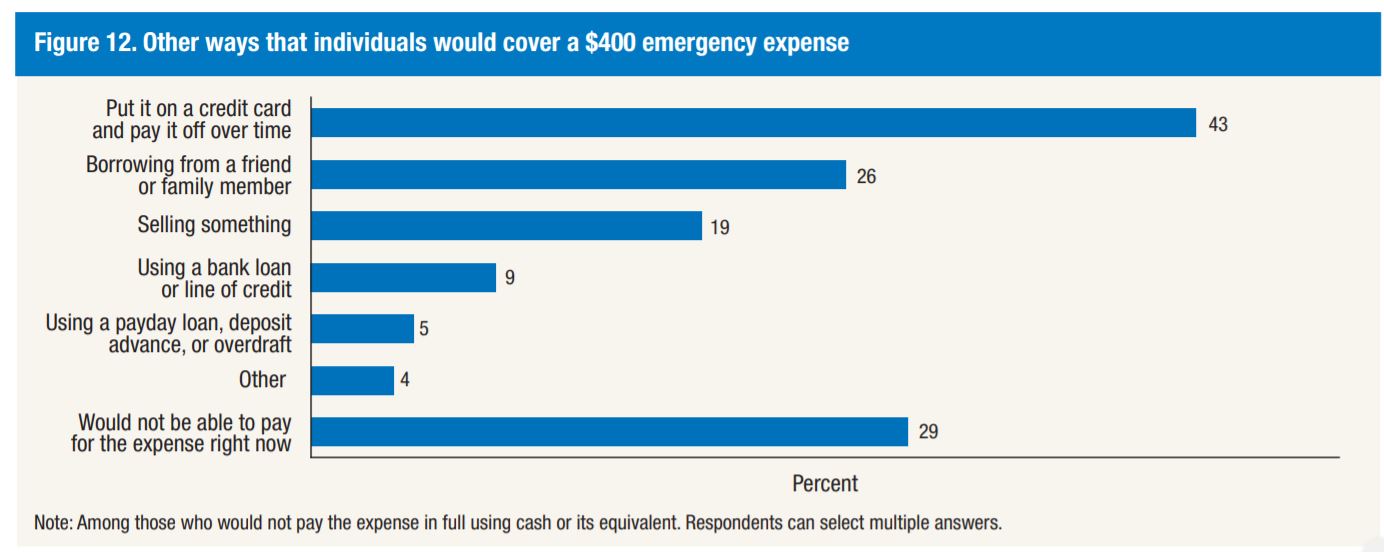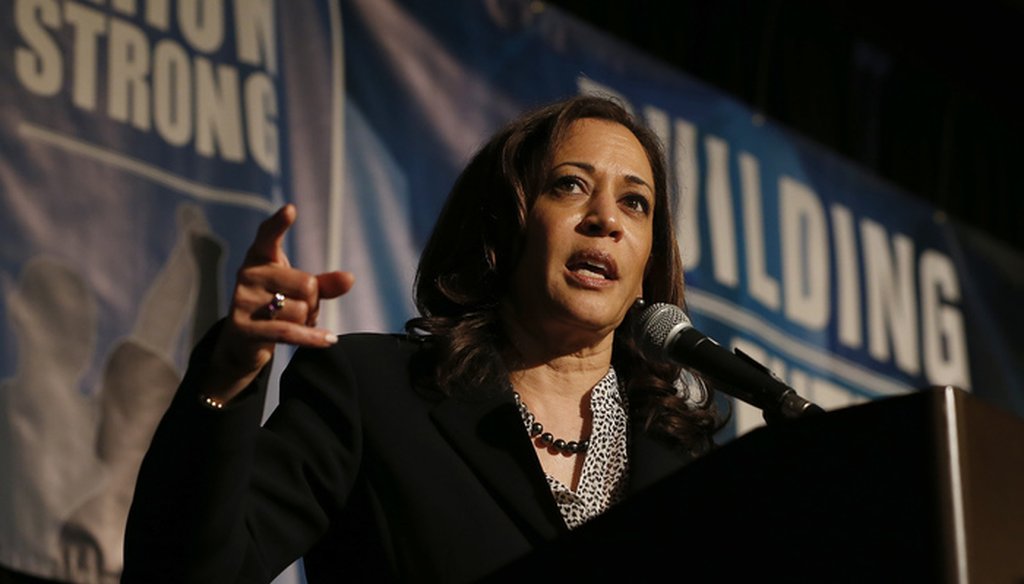



U.S. Sen. Kamala Harris, a candidate for the 2020 Democratic presidential nomination, addresses labor leaders in Sacramento, Calif., in April 2019. (AP Photo/Rich Pedroncelli)
On the 2020 presidential campaign trail, California Sen. Kamala Harris often describes the economic hardships faced by American families.
She cites statistics on the cost of housing, college, healthcare and how, if elected president, her policies would lessen the burden.
Harris took the same approach while speaking on the Pod Save America podcast this week, where she made this claim about economic instability:
"It's clear in our country right now, almost half of American families are a $400 unexpected expense away from complete upheaval."
We’ve seen similar versions of this claim before and wanted to know whether Harris’ statement was accurate.
We set out on a fact check.
Our research
In January, PolitiFact rated Mostly True a similar claim by Starbucks CEO Howard Schultz. He claimed in a "60 Minutes" interview that "Over 40 percent of the American people don't have $400 in the bank."
Schultz had relied on a May 2018 Federal Reserve report on the well-being of U.S. Households in 2017. It found that "Four in 10 adults, if faced with an unexpected expense of $400, would either not be able to cover it or would cover it by selling something or borrowing money."
Those findings generally support Harris’ contention of "almost half of American families" facing hardship with a $400 cost. A Harris campaign spokeswoman said the senator relied on the Fed report.
But we took a deeper look at the survey to examine her contention this would really lead to "complete upheaval" for almost half of American families.
What did the survey ask?
Here’s the survey question that led to the finding that 40 percent of adults couldn’t immediately pay for a $400 unforeseen cost.
"EF3. Suppose that you have an emergency expense that costs $400. Based on your current financial situation, how would you pay for this expense? If you would use more than one method to cover this expense, please select all that apply.
a. Put it on my credit card and pay it off in full at the next statement
b. Put it on my credit card and pay it off over time
c. With the money currently in my checking/savings account or with cash
d. Using money from a bank loan or line of credit
e. By borrowing from a friend or family member
f. Using a payday loan, deposit advance, or overdraft
g. By selling something"
The findings show that "59 percent of adults in 2017 said they could easily cover (the $400 expense), using entirely cash, savings or a credit card paid off at the next statement."
Among those who couldn’t easily pay it, 43 percent said they would put it on a credit card and pay it off over time; 26 percent reported they would borrow from a friend or family member; 19 percent said they would sell something; 9 percent responded that they would use a bank loan or line of credit; 5 percent said they would use a payday loan, deposit advance, or overdraft; and 4 percent said they would fined an undefined or "other" way to pay. And 29 percent said they "would not be able to pay the expense right now." Respondents were able to select multiple answers.

Experts weigh in
Daniel Schneider, a UC Berkeley sociology professor whose research specialties include economic instability, reviewed Harris’ statement, along with the survey and its findings.
"I think it is an open question about how those other options … map with ‘complete upheaval’. Is putting something on your credit card to pay off over time ‘complete upheaval’? Maybe," he wrote in an email. "One could certainly imagine that facing an expense shock and having to resort to (those options) would be stressful."
The "overall idea" behind Harris’ statement is accurate, Abdur Chowdhury, an economics professor emeritus at Marquette University told us in an email.
Chowdhury added, however, that the percentage of people who face a hardship due to a $400 unanticipated cost "may be lower today. The survey, from which the figure was quoted, was conducted a few years ago."
"With the low unemployment rate and increases in wage rate, fewer people are in that 'close to bankruptcy' category," the professor added.
A spokeswoman for the Harris campaign provided a written statement:
"Millions of hard-working Americans can't cover an unexpected $400 expense. They are a medical bill, a car repair, or a rent increase away from having to make painful choices like turning to a neighbor hat in hand to ask for a loan, putting themselves in spiraling credit card debt, selling their car, or heading to a pawn shop with their wedding ring. To presume any of these things would not upend someone's daily life is out of touch."
Our rating
Sen. Kamala Harris recently claimed: "It's clear in our country right now, almost half of American families are a $400 unexpected expense away from complete upheaval."
The portion of Harris’ statement about "almost half" of families is on the right track. A 2018 Federal Reserve report found 40 percent of adults surveyed could not easily pay for an unforeseen $400 cost.
But the report doesn’t describe "complete upheaval" for that group. Instead, it found many would place that expense on a credit card and pay it off over time, borrow money from a friend or family or sell a possession.
Those represent very real hardships for families. But to characterize them as leading to "complete upheaval" is not supported by the facts and takes the survey results out-of-context.
We rated Harris’ claim Half True.
HALF TRUE – The statement is partially accurate but leaves out important details or takes things out of context.
Click here for more on the six PolitiFact ratings and how we select facts to check.
RELATED:
Kamala Harris calls her LIFT plan ‘the most significant middle-class tax cut in generations.’ Is it?
Kamala Harris gets it mostly right on America’s rapid growth of student loan debt
Are paychecks failing to keep up with inflation?
Does teacher pay fall short of the living wage in 30 states, as Kamala Harris said?
Kamala Harris, interview on Pod Save America podcast, April 17, 2019
Kate Waters, spokeswoman for Harris campaign, phone interview, April 18, 2019
PolitiFact, Checking Howard Schultz's claim that 40 percent of Americans don't have $400 in the bank, Jan. 29, 2019
U.S. Federal Reserve, Report on the Economic Well-Being of U.S. Households in 2017 and Survey Questionnaire, May 2018
Daniel Schneider, University of California, Berkeley, sociology professor, whose research specialties include economic instability, April 18, 2019
Abdur Chowdhury, Marquette University emeritus economics professor, email exchange April 18, 2019
In a world of wild talk and fake news, help us stand up for the facts.
